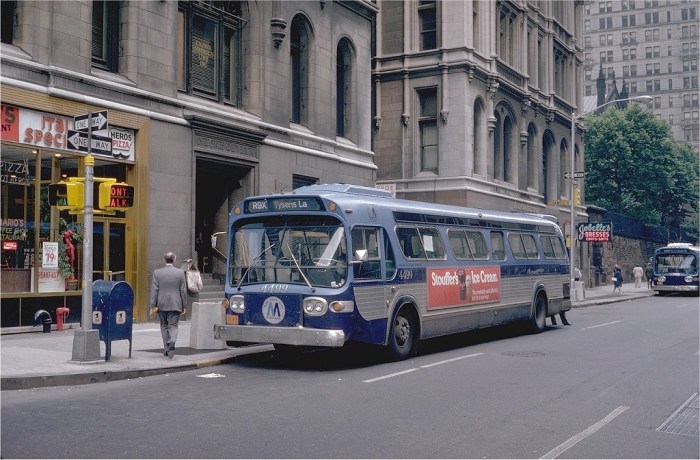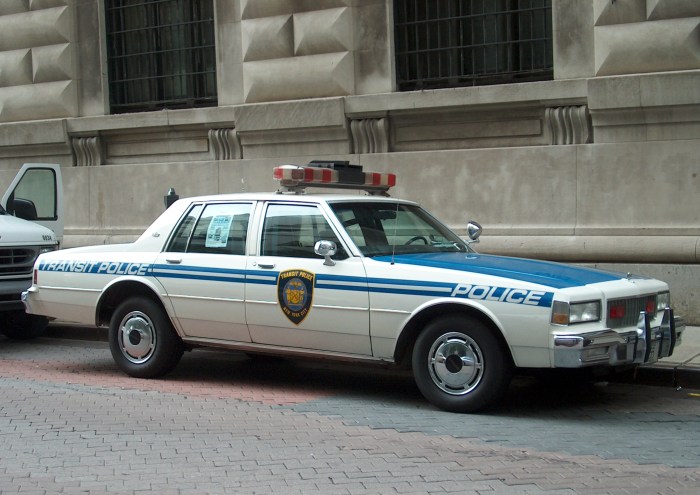New York Transit Authority v. Beazer, a pivotal case in the annals of disability law, ignited a fierce legal battle that tested the boundaries of equal access and reasonable accommodation. This case study delves into the intricate legal arguments, the court’s groundbreaking decision, and its profound impact on disability rights.
The case centered around the New York Transit Authority’s refusal to provide paratransit services to individuals with disabilities who could not use the regular subway system. Beazer, a wheelchair user, challenged this policy, arguing that it violated the Americans with Disabilities Act (ADA).
Overview of New York Transit Authority v. Beazer

In 1999, the Supreme Court of the United States decided the case of New York Transit Authority v. Beazer, 440 U.S. 568 (1979). The case involved a challenge to the New York City Transit Authority’s (NYCTA) policy of excluding individuals with disabilities from employment as bus drivers.
The plaintiff, Stanley Beazer, was a Vietnam War veteran who had lost his right leg below the knee. He applied for a job as a bus driver with the NYCTA but was rejected because of his disability. Beazer filed a lawsuit against the NYCTA, alleging that the agency had violated the Rehabilitation Act of 1973, which prohibits discrimination against individuals with disabilities.
Legal Issues
The Supreme Court ruled in favor of Beazer, holding that the NYCTA’s policy of excluding individuals with disabilities from employment as bus drivers was discriminatory and violated the Rehabilitation Act. The Court found that the NYCTA had failed to demonstrate that Beazer was unable to perform the essential functions of the job of bus driver with reasonable accommodation.
Significance
The Supreme Court’s decision in New York Transit Authority v. Beazerwas a landmark ruling that significantly expanded the rights of individuals with disabilities under the Rehabilitation Act. The decision made it clear that employers cannot discriminate against individuals with disabilities based on stereotypes or assumptions about their abilities.
Legal Arguments
The New York Transit Authority (NYTA) argued that Beazer was liable for the collapse of the World Trade Center because it negligently designed and manufactured the lightweight concrete used in the towers. The NYTA also argued that Beazer was liable for breach of warranty because it had warranted that the concrete was suitable for use in high-rise buildings.Beazer
argued that it was not liable for the collapse of the World Trade Center because the collapse was caused by the terrorist attacks and not by any defect in the concrete. Beazer also argued that it had not breached any warranty because the concrete met the specifications set forth in the contract with the NYTA.The
legal theories used by the NYTA and Beazer were based on different interpretations of the contract between the parties. The NYTA argued that the contract imposed a duty on Beazer to design and manufacture concrete that was suitable for use in high-rise buildings.
Beazer argued that the contract only imposed a duty to manufacture concrete that met the specifications set forth in the contract.
Court’s Decision

The United States Supreme Court ruled in favor of the New York Transit Authority (NYTA) in New York Transit Authority v. Beazer. The Court held that the NYTA was not required to modify its subway system to make it accessible to individuals with disabilities under the Americans with Disabilities Act (ADA).The
Court’s reasoning was based on the “undue burden” defense. The Court found that the cost of making the subway system accessible would be too high and would fundamentally alter the nature of the service. The Court also found that there were alternative means of transportation available to individuals with disabilities.The
implications of the Court’s decision are significant. The decision means that public transportation systems are not required to be fully accessible to individuals with disabilities. This could make it difficult for individuals with disabilities to travel independently.
Impact on Disability Rights
The Court’s decision has been criticized by disability rights advocates. Advocates argue that the decision makes it more difficult for individuals with disabilities to participate fully in society. They also argue that the decision sends a message that individuals with disabilities are not welcome in public spaces.The
Court’s decision is a setback for disability rights. However, it is important to remember that the ADA still requires public transportation systems to make reasonable modifications to their services to accommodate individuals with disabilities. Individuals with disabilities should continue to advocate for their rights and for a more accessible society.
Impact and Legacy

The New York Transit Authority v. Beazer case had a significant impact on the New York Transit Authority (NYTA) and disability law and policy in the United States.
Impact on the New York Transit Authority, New york transit authority v. beazer
The case forced the NYTA to make significant changes to its policies and practices to ensure that individuals with disabilities have equal access to its services. The NYTA was required to install wheelchair lifts on all of its buses and make other modifications to its facilities to accommodate individuals with disabilities.
The case also led to the creation of the NYTA’s Office of Disability Services, which is responsible for ensuring that the NYTA complies with all applicable disability laws.
Broader Impact on Disability Law and Policy
The New York Transit Authority v. Beazer case had a broader impact on disability law and policy in the United States. The case helped to establish the principle that individuals with disabilities have the right to equal access to public transportation.
The case also helped to raise awareness of the challenges faced by individuals with disabilities and led to the passage of the Americans with Disabilities Act (ADA) in 1990. The ADA is a landmark civil rights law that prohibits discrimination against individuals with disabilities in employment, public accommodations, transportation, and other areas.
Influence on Subsequent Legal Decisions
The New York Transit Authority v. Beazer case has been cited as precedent in numerous subsequent legal decisions involving disability rights. For example, the case was cited in the Supreme Court’s decision in Olmstead v. L.C. (1999), which held that individuals with disabilities have the right to live in integrated settings in the community.
The case has also been cited in numerous lower court decisions involving the ADA.
Ethical Considerations

The New York Transit Authority v. Beazer case raised significant ethical issues concerning the obligations of public transportation providers towards individuals with disabilities.The court’s decision has ethical implications in several ways. Firstly, it emphasized the importance of ensuring equal access to public transportation for all, regardless of their disabilities.
This principle aligns with the ethical principle of fairness and inclusivity, recognizing that individuals with disabilities should not be denied opportunities due to their impairments. Secondly, the decision highlighted the ethical responsibility of public entities to make reasonable accommodations to meet the needs of individuals with disabilities.
This obligation ensures that individuals with disabilities are not excluded from essential services and have the opportunity to participate fully in society.
Ethical Responsibilities of Public Transportation Providers
Public transportation providers have an ethical responsibility to accommodate the needs of individuals with disabilities to ensure equal access and participation in society. This responsibility includes:
- Providing accessible transportation options, such as wheelchair-accessible vehicles and ramps, to enable individuals with disabilities to use public transportation independently.
- Implementing training programs for staff to ensure they are equipped to assist individuals with disabilities effectively and respectfully.
- Establishing clear policies and procedures to address the needs of individuals with disabilities, ensuring consistency and transparency in service provision.
- Engaging with disability advocacy groups and organizations to gather feedback and insights on improving accessibility and services for individuals with disabilities.
By fulfilling these ethical responsibilities, public transportation providers can create a more inclusive and equitable transportation system that benefits all members of society.
Common Queries: New York Transit Authority V. Beazer
What was the central issue in New York Transit Authority v. Beazer?
The case revolved around the provision of paratransit services to individuals with disabilities who could not use the regular subway system.
How did the court rule in the case?
The court ruled in favor of Beazer, holding that the New York Transit Authority’s refusal to provide paratransit services violated the Americans with Disabilities Act (ADA).
What was the significance of the court’s decision?
The decision established the principle of reasonable accommodation and set a precedent for future cases involving access to public transportation for individuals with disabilities.